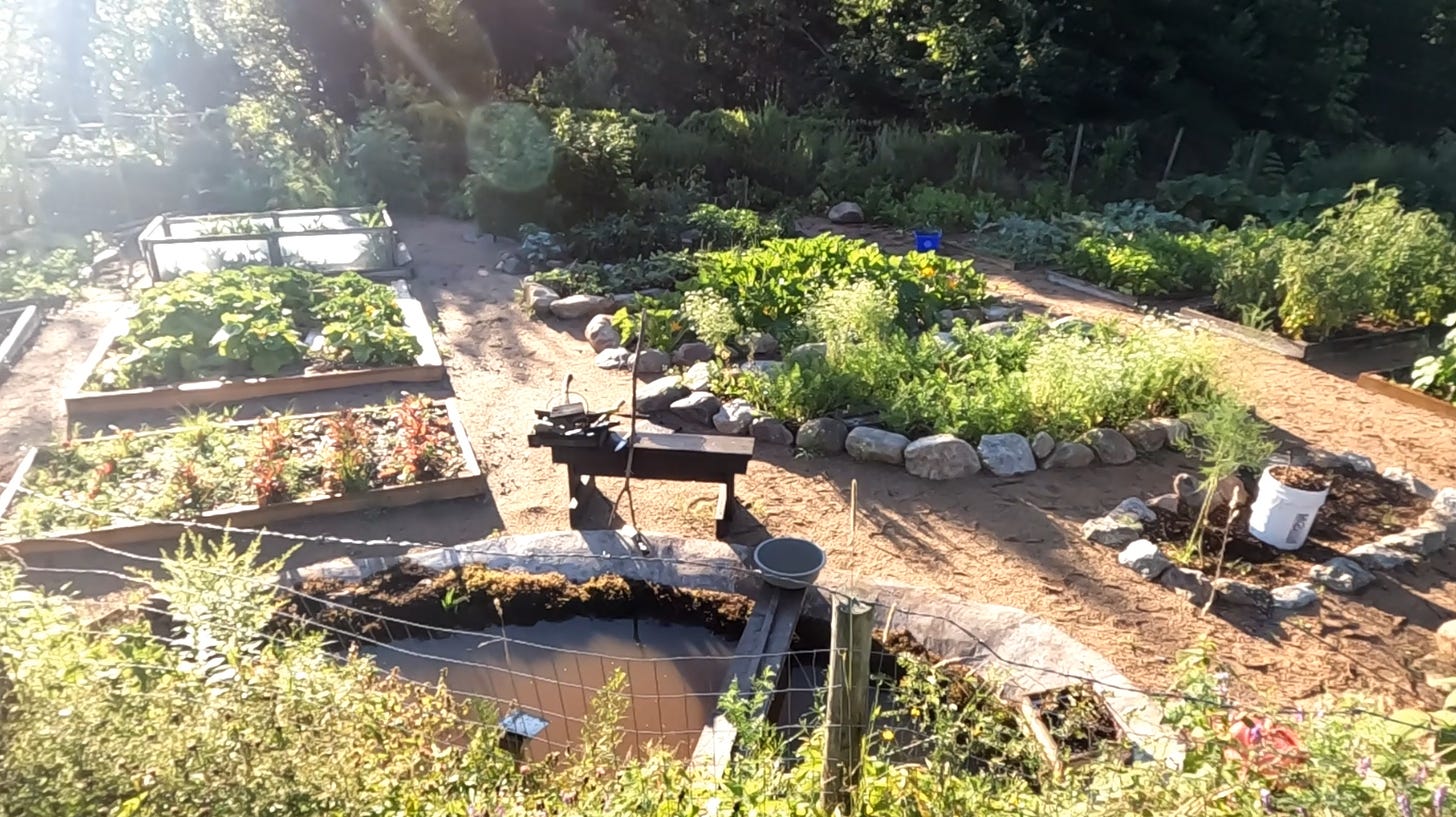Back to Gardening Chapter 4, Design - Part C: Microclimates
In this section of Chapter 4 I explain why it is important to think about natural and artificial microclimates when designing a gardening space.
Back to Gardening Chapter 4, Design - Part C: Microclimates
A microclimate is any given space where the climate conditions (temperature, humidity, wind, etc.) are different from the larger area in which that space is located. This matters for gardening because a big part of plant growth is a matter of capturing the sun’s energy - both in terms of plants using it for photosynthesis, and because plants respond directly to the temperature of the air and soil. Each plant has an optimal temperature range for growth. If the air and soil are too hot or too cold, the growth-rate will decrease, or the plant may shut down and go dormant, or become damaged, or even die. The same is the case for seeds. Each plant also has an optimal amount of direct sunlight needed for healthy development. By understanding how to take advantage of natural microclimates and how to create artificial ones in a growing space, a gardener can make the most of the growing season.

The simplest example of a microclimate is the area surrounding a house1. In the morning in June (where I live) at 10:00am, it might be 15 degrees Celsius outside in general - but there will be dramatic differences in the soil temperature around the house due to the changing position of the sun and the shade cast by the house. The Eastern and Southern sides of the house will have warmer soil than the Western and Northern sides in the morning. Later in the afternoon, the Eastern side will cool a bit as the Western side heat up. Constantly in shade, the Northern side will stay relatively cool all day. Constantly in the sun, the Southern side will have the warmest soil all day. As a result, the grass will grow the most on the Southern side because it gets the most sun and the most heat most of the time. The Eastern and Western sides will have roughly the same rates of growth because one gets the morning sun while the other gets the afternoon sun. The Northern side will have the slowest rate of growth due to relative lack of sun on that side. Incidentally, I have a combination of moss and grass on the Northern side of my house due to the unique growing conditions provided by the constant shade.
A garden space works the same way, and so it is important to understand the natural microclimates that affect its growing conditions, but it is also important to know how to create microclimates to increase energy capture when that is desired.
Keep reading with a 7-day free trial
Subscribe to The Maritime Gardening Newsletter to keep reading this post and get 7 days of free access to the full post archives.


